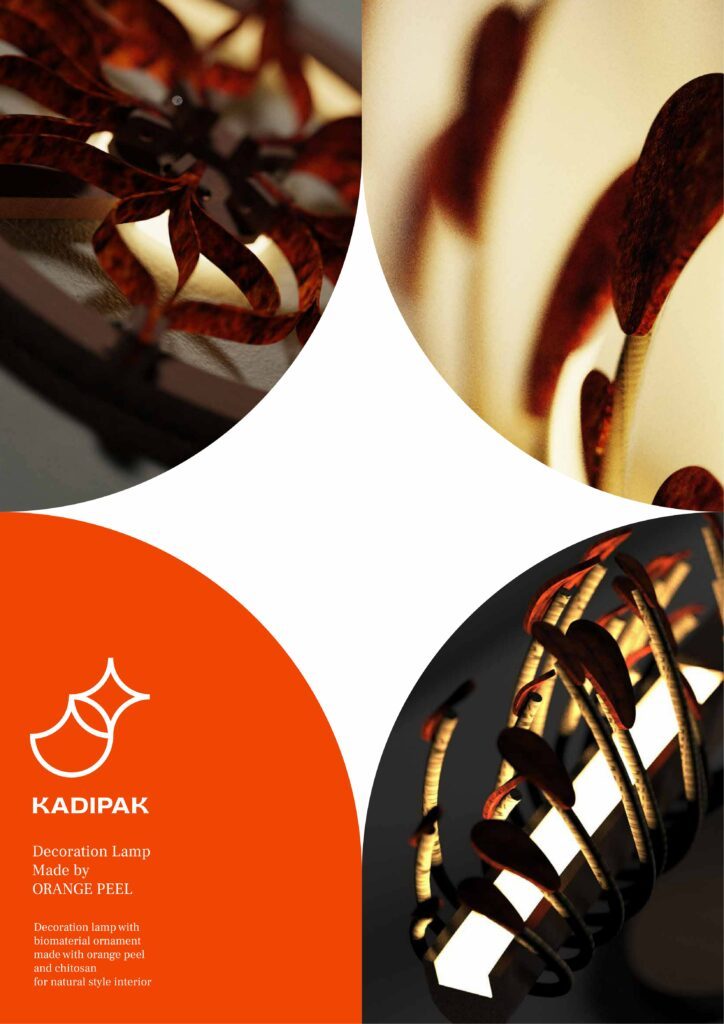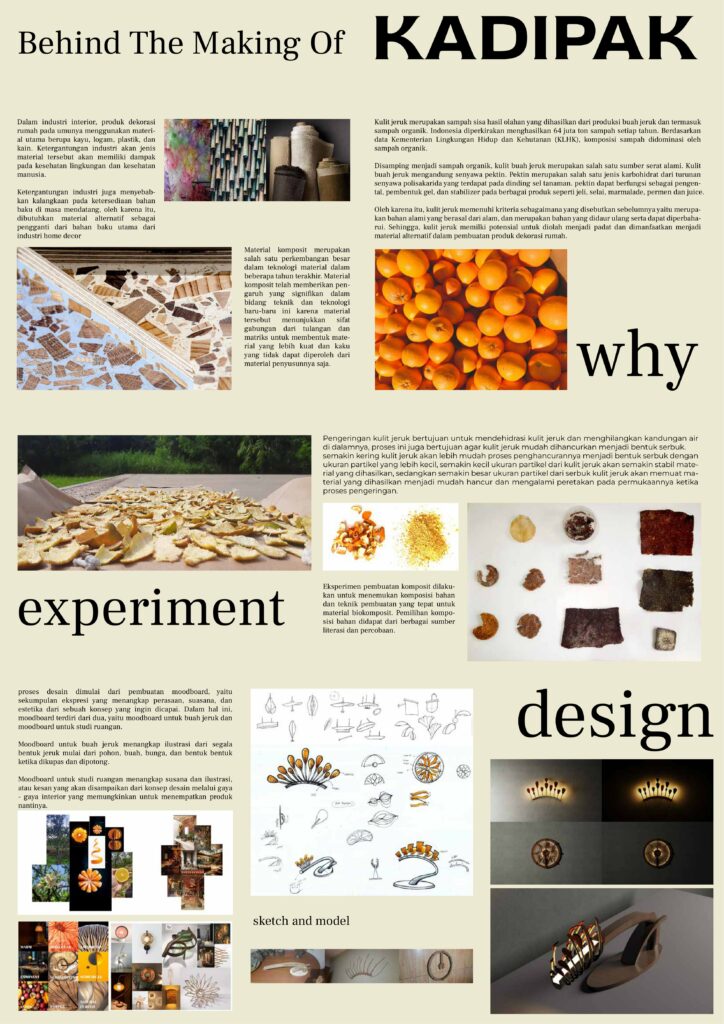In the interior industry, decoration products generally use the main materials of wood, metal, plastic and fabric. Industry’s dependence on this type of material will have an impact on environmental health and human health. Industrial dependence also causes shortages in the availability of raw materials in the future, therefore, alternative materials are needed as a substitute for the main raw materials of the interior decoration industry. Composite materials are one of the major developments in materials technology in recent years due to their interesting characteristics. Currently most fibers and resins come from petroleum raw materials and do not degrade for decades under normal environmental conditions. Composites made from thermosetting resin cannot be reprocessed or recycled, therefore a type of biocomposite material has been developed, namely a composite that uses a mixture of organic materials and is more environmentally friendly. Orange peel is the remaining processed waste resulting from orange fruit production and is included in organic waste. Orange production centers are almost spread throughout Indonesia, while the composition of waste in Indonesia is dominated by organic waste, which reaches 60% of the total waste. Processing organic waste can produce gases that increase the greenhouse effect. Orange peel is a source of natural fiber which has the potential to be developed into a material. Based on previous research, the use of orange peel is currently generally developed in the agricultural sector as a fertilizer mixture, and in the fashion sector as an alternative to synthetic fibers. The fiber and pectin content contained in orange peel is an ingredient that can be processed into a mixture of biocomposite materials. This research aims to explore the characteristics of orange peel material and discover its potential use as a product material. The author uses primary data collection methods with experiments to determine the composition of materials and material characteristics as well as appropriate treatment of materials. Secondary data collection was carried out through literature studies and various analyzes such as moodboards, form studies and market analysis. The data obtained is then used as a design reference. The design process is carried out from drawing ideation sketches, continuing to 3D rendering and mock up simulations as well as making prototypes. The result of this research is a series of decorative products in the form of lamps. The lighting products designed utilize experimental materials as decorative components to support the visual style applied, apart from that, the products also have business branding to reach the right consumers according to the concept applied.


